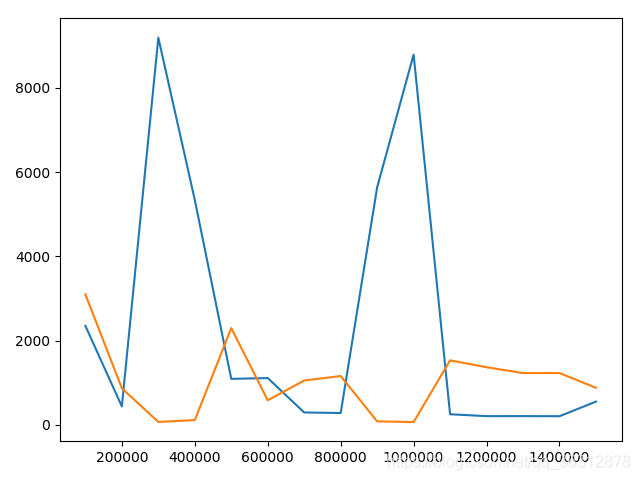随机梯度下降法——python实现
梯度下降法及题目见此博客
Exercise 3:
题目
Now, we turn to use other optimization methods to get the optimal parameters. Can you use Stochastic Gradient Descent to get the optimal parameters? Plots the training error and the testing error at each K-step iterations (the size of K is set by yourself). Can you analyze the plots and make comparisons to those findings in Exercise 1?
Exercise 3: 现在,我们使用其他方法来获得最优的参数。你是否可以用随机梯度下降法获得最优的参数?请使用随机梯度下降法画出迭代次数(每K次,这里的K你自己设定)与训练样本和测试样本对应的误差的图。比较Exercise 1中的实验图,请总结你的发现。
答案
-
误差
迭代次数 训练集误差 测试集误差 100000 2349.4672751626663 3096.2253976063507 200000 435.2953157918752 867.2532946436027 300000 9191.947830437808 66.91437740326361 400000 5340.357593925614 110.47975170582515 500000 1090.0735267479458 2296.224940582353 600000 1108.7868485577676 581.28082487602 700000 292.1925854126944 1050.4866035021282 800000 278.553496304599 1157.3717939063465 900000 5638.097793259407 80.34942002974526 1000000 8791.764070868754 64.02723320568694 1100000 249.09710616523427 1529.4686707317628 1200000 204.69153506322482 1366.17101417547 1300000 205.55798760414544 1227.418573865224 1400000 202.75800423274228 1228.0429258477968 1500000 549.766187456897 877.6109789872294 -
误差图

-
代码
import numpy as np import math import matplotlib.pyplot as plt def loss(train_data, weight, train_real): result = np.matmul(train_data, weight.T) loss = result - train_real losses = pow(loss, 2) losses = losses.T return losses.sum() def gradient(train_data, weight, train_real): num = np.random.randint(0, 50) one_train_data = train_data[num] one_train_real = train_real[num] result = np.matmul(one_train_data, weight.T) loss = one_train_real - result # print (train_real) # print (result) # print (loss) x1 = one_train_data[0] x1 = x1 gradient1 = loss * x1 x2 = one_train_data[1] x2 = x2 gradient2 = loss * x2 x3 = train_data.T[2] x3 = x3.T gradient3 = loss * x3 return gradient1.T.sum(), gradient2.T.sum(), gradient3.T.sum() filename = "./dataForTraining.txt" filename1 = "./dataForTesting.txt" # input the train data read_file = open(filename) lines = read_file.readlines() list_all = [] list_raw = [] list_real = [] for line in lines: list1 = line.split() for one in list1: list_raw.append(float(one)) list_all.append(list_raw[0:2]) list_real.append(list_raw[2]) list_raw = [] for one in list_all: one.append(1.0) train_data = np.array(list_all) train_real = np.array(list_real) train_real = train_real.T # input the test data read_test = open(filename1) test_lines = read_test.readlines() list_all_test = [] list_raw_test = [] list_real_test = [] for test_line in test_lines: another_list = test_line.split() for one in another_list: list_raw_test.append(float(one)) list_all_test.append(list_raw_test[0:2]) list_real_test.append(list_raw_test[2]) list_raw_test = [] for one in list_all_test: one.append(1.0) train_test_data = np.array(list_all_test) train_test_real = np.array(list_real_test) train_test_real = train_test_real.T # set the parameter weight = np.array([0.0, 0.0, 0.0]) lr = 0.00015 x = [] y = [] z = [] for num in range(1, 1500001): losses = loss(train_data, weight, train_real) real_losses = loss(train_test_data, weight, train_test_real) gra1, gra2, gra3 = gradient(train_data, weight, train_real) gra = np.array([gra1, gra2, gra3]) weight = weight + (gra * lr) # print (losses, real_losses) if num % 100000 == 0: x.append(num) y.append(losses) z.append(real_losses) print (losses, real_losses) plt.plot(x, y) plt.plot(x, z) plt.show()





















 523
523











 被折叠的 条评论
为什么被折叠?
被折叠的 条评论
为什么被折叠?








